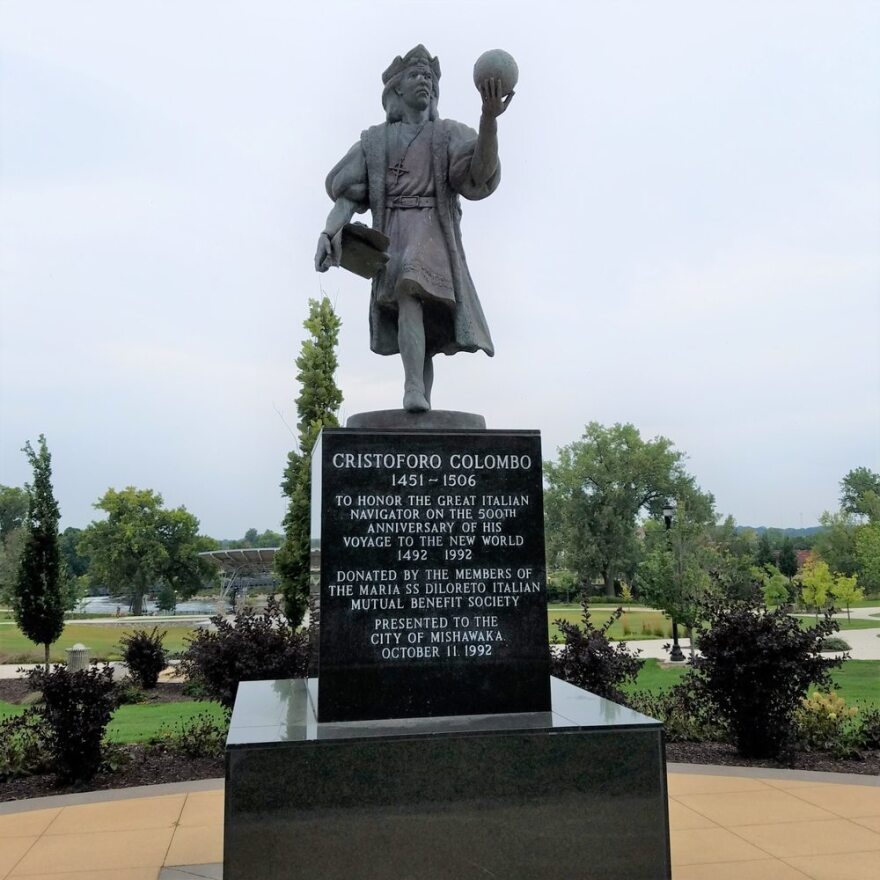For most people driving along Mishawaka Ave in the town of the same name, it’s just a statue. A man in period dress, standing on a pedestal, looking out over the city. A bronze plaque identifies him as Cristoforo Columbo. But the statue, and the man it honors, tell a far more complex story than a simple monument might suggest.
The first thing to consider is the obvious paradox. Christopher Columbus never set foot in Mishawaka, nor anywhere near the Midwest. His voyages were confined to the Atlantic and the Caribbean. So why is a monument to him standing in Central Park, in this small Indiana city, surrounded by a community with no direct connection to his travels?
The answer, as with so many statues across America, has less to do with the man himself and more to do with the people who built it. Columbus statues popped up like dandelions in the late 19th and early 20th centuries, a time when Italian Americans were still fighting to be seen as fully and equally American. For a long time, they faced discrimination and were often associated with poverty and organized crime. Columbus, an Italian sailor who “discovered” the New World, became a powerful symbol. He was a figure of pride, a way to claim a heroic place in the American story and assert their heritage as an integral part of the nation's fabric. By celebrating Columbus, they were, in essence, celebrating themselves and their contribution to a country that was not always welcoming.
This particular monument, though, was erected even later, celebrating the 500th anniversary of his travels in 1492. At that point, the narrative was simple and undisputed. Columbus, through grit and courage, proved the world was not flat and brought Europe to the Americas, a beacon of progress and discovery. This is the version of history many of us grew up with—a clean, uncomplicated tale of a hero setting sail for a new land.

But history is never so clean. As we’ve learned more about the true consequences of Columbus’s arrival, the heroic narrative has begun to erode. The story of Christopher Columbus is not just one of exploration, but also of exploitation and the beginning of a centuries-long tragedy for Indigenous peoples.
Upon arriving in the Americas, Columbus and his men encountered the Taíno people,
who were known for their peaceful and generous nature. But the exchange was not one of equals. Columbus's arrival set in motion a series of events that would have devastating consequences. The explorer himself took Taíno people captive and sent them back to Spain, and he established a demanding quota system for gold. The punishments for failing to meet these quotas were severe. Furthermore, the diseases carried by his crew, for which the Taíno had no natural resistance, led to a catastrophic decline in their population.
This is the other side of the story—the side that the monument in Mishawaka doesn’t show. The very act of honoring Columbus, of literally putting him on a pedestal, diminishes the history and suffering of the people whose lives were impacted by his actions. It sends a message that the lives and cultures that were destroyed in the name of conquest are less important than the legacy of the conqueror.
So, what should happen to the statue? The solution isn't necessarily to tear it down and erase history. That doesn’t solve the problem; it just hides it. Instead, we can re-contextualize the monument. We can add new plaques that tell the whole story, not just the heroic parts. Or we can erect new art that sits alongside it, to honor the indigenous people who were here first and whose cultures and lives were shattered by the events Columbus set in motion.
In the 21st century, this statue, meant to celebrate a brave man from centuries ago, challenges us to consider a different kind of courage – one of confronting injustice and honoring the stories that have long been silenced. Public art can be a way for us to confront the messy, complicated truths of our shared past and to decide what values we want represented today.


